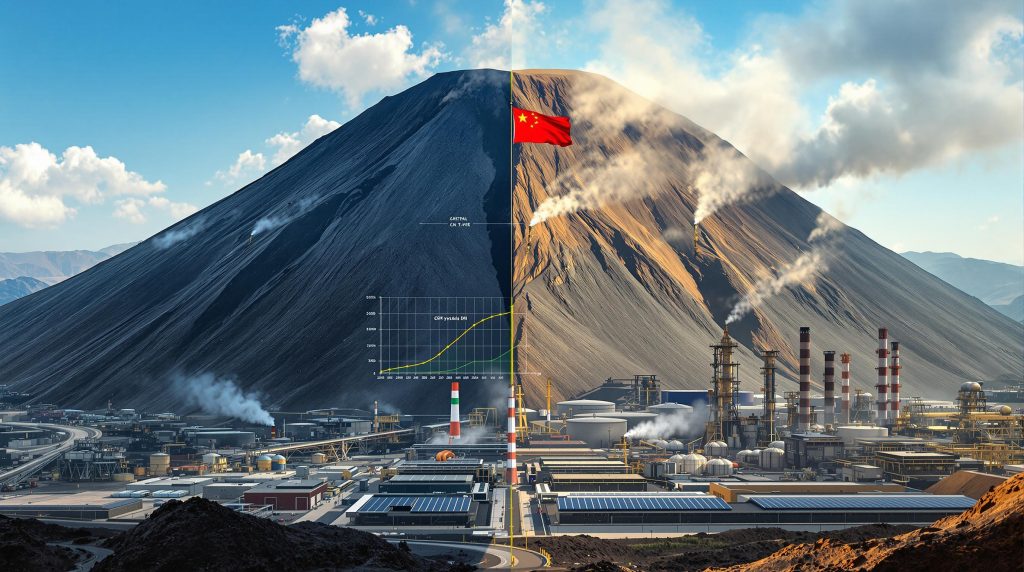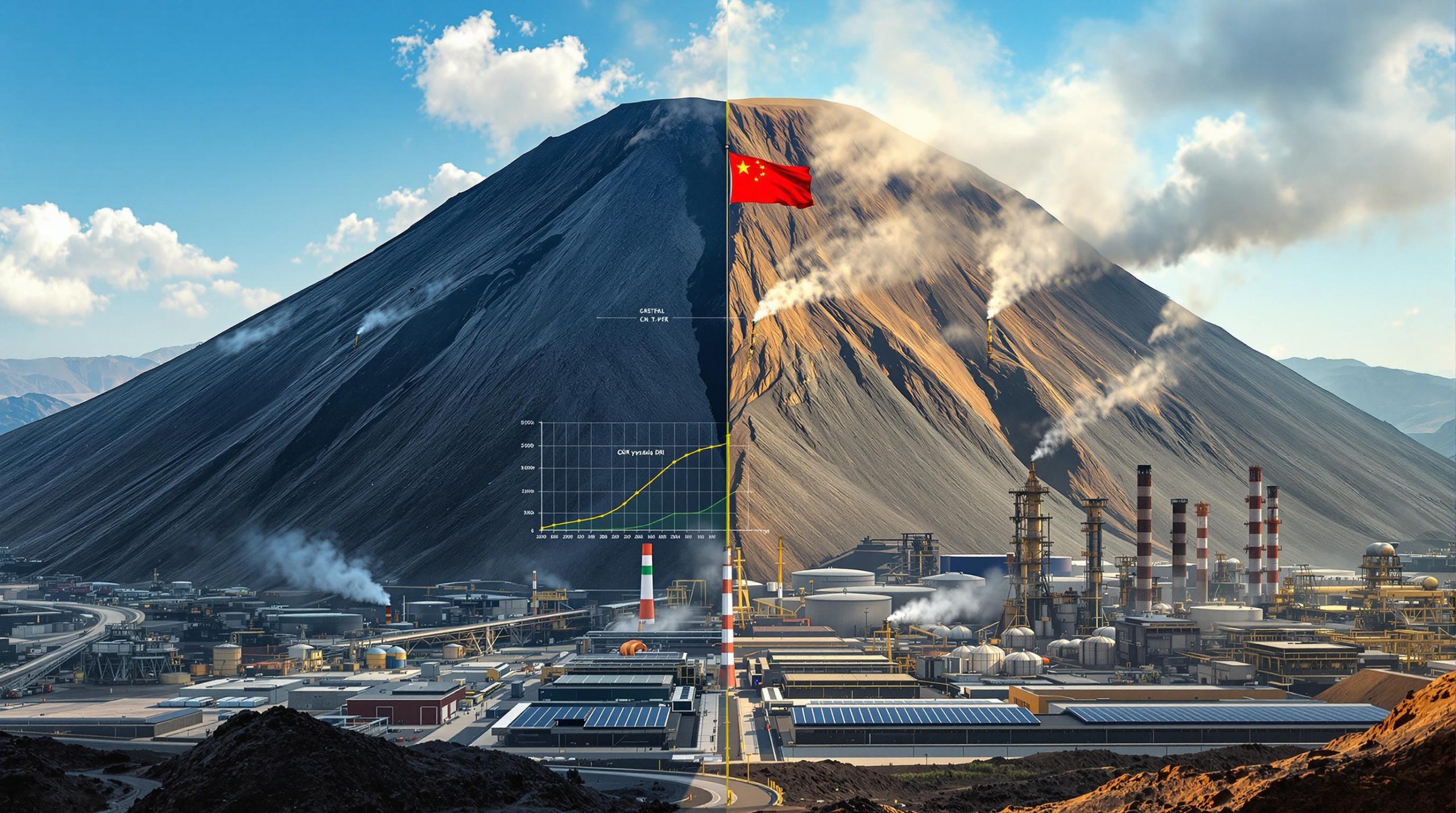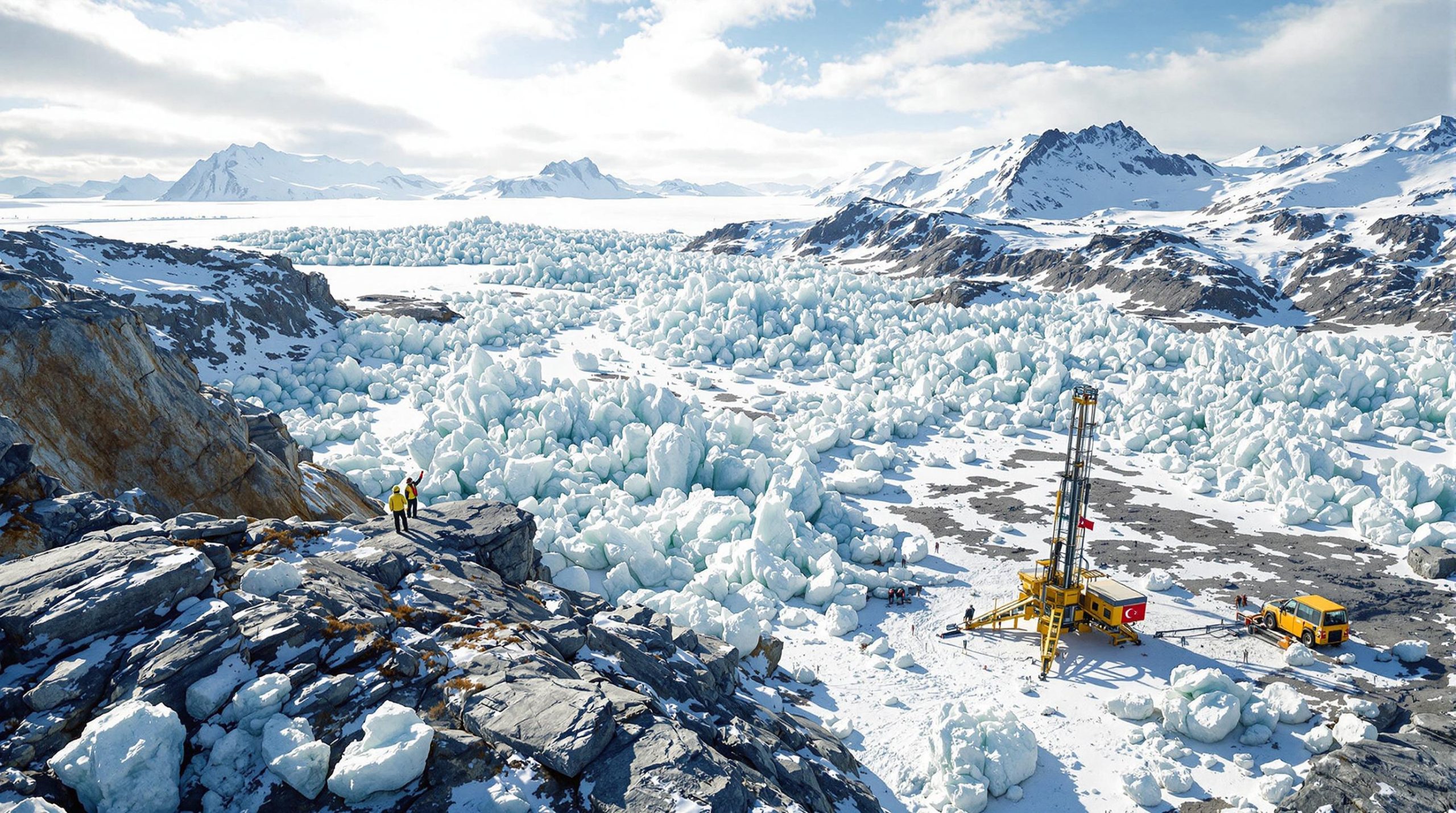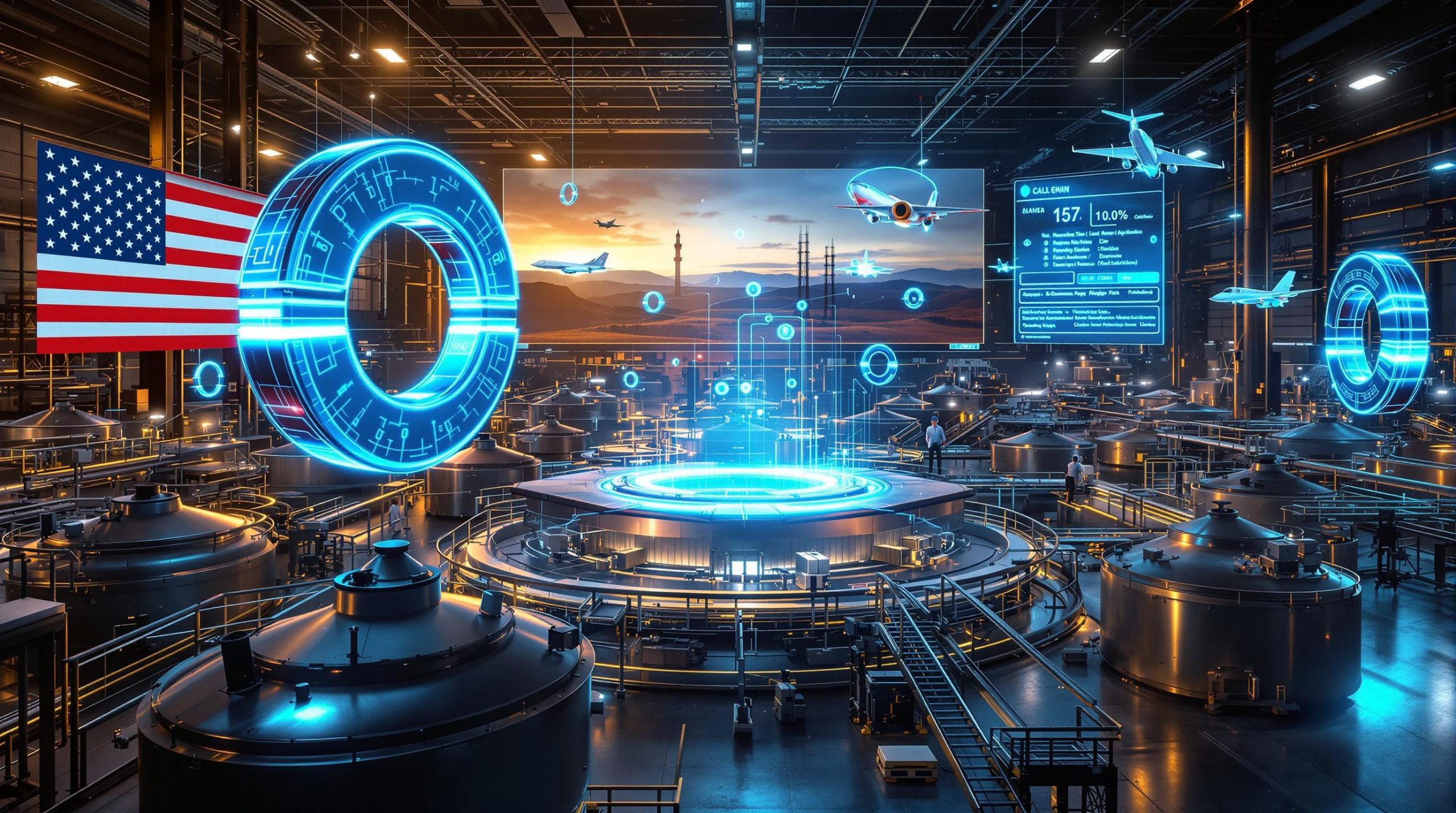Understanding the Iron Ore Paradox: Short-Term Market Realities vs. Long-Term Green Steel Goals
The global steel industry finds itself at a critical junction where immediate economic pressures clash with long-term sustainability goals. This fundamental tension creates what industry experts call "the iron ore paradox" – a complex challenge that impacts everyone from miners to steel producers to end consumers.
The Global Steel Industry at a Crossroads
Today's steel industry operates in an environment of competing priorities. Companies must balance cost-efficiency demands against increasingly stringent environmental requirements, all while navigating volatile market conditions.
"Steel's future is being forged in a crucible of competing demands," notes a recent industry report from Fastmarkets, highlighting the pressure points shaping strategic decisions across the value chain.
Regional approaches to decarbonization vary dramatically. While European steelmakers aggressively pursue green technologies with government support, producers in developing economies often prioritize growth and affordable production to meet rising domestic demand.
The resulting landscape creates a segmented market where iron ore demand insights differ based on geography, regulatory environment, and technological capabilities – further complicating the global supply chain.
What Is the Iron Ore Paradox?
At its core, the iron ore paradox represents a fundamental disconnect between short-term market realities and long-term industry goals. Economic pressures currently favor lower-grade iron ores that reduce immediate production costs, while environmental imperatives push for higher-grade materials that enable cleaner steelmaking.
"While economic realities make lower-grade ores attractive now, the industry can't ignore the drive to decarbonize steel production," explains Fastmarkets in their analysis of market dynamics. This creates a significant financial gap between what makes economic sense today versus what's needed for tomorrow's sustainability objectives.
This paradox creates tension among stakeholders. Mining companies must decide whether to invest in developing high-grade deposits that may not command sufficient premiums today. Steel producers must balance cost control against future-proofing their operations. Investors struggle to value assets in a transitioning industry.
Why This Paradox Matters Now
The iron ore paradox has far-reaching implications for capital allocation decisions across the industry. Companies making multi-billion dollar investments today must predict how quickly decarbonization technologies will mature and gain market share.
These decisions directly impact national climate commitments. Steel production accounts for approximately 7-9% of global carbon emissions. Without shifts toward higher-grade iron ore inputs and cleaner processing technologies, meeting Paris Agreement targets becomes significantly more difficult.
The paradox also reshapes competitive positioning. Companies that navigate this transition successfully will emerge as leaders in the new market landscape, while those that miscalculate risk becoming uncompetitive or stranded with outdated assets.
How Are Current Market Conditions Shaping Iron Ore Preferences?
The Profit Squeeze in Steel Production
Steel margins have been under significant pressure since 2023, fundamentally altering iron ore purchasing behavior. The cyclical nature of the industry has also changed, with market observers noting that "upsides are now smaller and downturns last longer" in recent cycles.
Construction slowdowns, particularly in China, have dramatically impacted demand patterns. With real estate development cooling, the industry's traditional growth engine has downshifted, forcing producers to adapt quickly.
Profitability challenges vary by region. European producers face high energy costs and carbon prices. Chinese mills contend with overcapacity and slowing domestic demand. Indian producers must navigate infrastructure constraints despite growing markets.
Cost-Driven Strategies Taking Priority
In response to these pressures, steelmakers have dramatically shifted their sourcing strategies. "Cost management leads the way. Steelmakers are sourcing more lower-grade iron ore fines, blending materials from a wider range of suppliers, and reducing spend on premium feeds," according to Fastmarkets analysis.
This marks a significant change from 2021-2022, when healthier margins allowed mills to pay premiums for cleaner, higher-grade inputs. Today, the price gap between high and low-grade ores has substantially narrowed as cost concerns override quality considerations.
Supplier diversification has become increasingly common. Rather than relying on a small number of premium ore sources, mills now blend materials from multiple suppliers to achieve acceptable quality at lower costs. This approach reduces dependence on any single source while maximizing cost efficiency.
Short-Term Adaptation Techniques
Beyond input adjustments, steel producers are implementing diverse strategies to weather current market conditions:
- Product diversification – Moving beyond construction-grade steel toward manufacturing, infrastructure, and export markets
- Operational efficiency – Implementing process improvements to reduce energy consumption and increase yield
- Cost management – Reducing overhead expenses and optimizing supply chains
- Strategic responses to trade barriers – Developing alternative markets as protectionism rises
These short-term measures help companies survive the current market environment while positioning for eventual recovery. However, they often delay investments in decarbonization technologies that would require higher-grade iron ore inputs.
What's Changing in Global Steel Demand Patterns?
China's Evolving Role
China's steel industry is undergoing a profound transition that will reshape global markets. After decades of explosive growth, "China's steel production is forecasted to decline as its economy matures and domestic needs peak," according to industry analysts at Fastmarkets.
Per capita steel use in China has dropped for three consecutive years, signaling a structural shift rather than a temporary fluctuation. This trend aligns with China's demographic changes, including an aging population and slowing urbanization rate that directly impacts construction-driven steel demand.
The implications extend beyond China's borders. As the world's largest steel producer and consumer transitions from growth engine to mature market, global trade flows and iron ore price trends will fundamentally change. This creates both challenges and opportunities for producers and traders worldwide.
Emerging Centers of Steel Consumption
As China's growth moderates, other regions are emerging as vital demand centers:
- India leads this transition with ambitious infrastructure development plans
- Southeast Asia continues industrializing rapidly
- Middle Eastern nations diversify economies through construction and manufacturing growth
Consumption metrics tell an important story. India's steel consumption remains less than half the global average, suggesting significant growth potential as the country develops. This untapped demand represents one of the industry's most promising long-term opportunities.
However, growth trajectories will differ from China's experience. Environmental considerations, different funding models, and alternative construction technologies may result in different steel intensity patterns across these emerging markets.
Logistical and Quality Challenges
The geographical shift in demand creates new supply chain challenges. India's domestic iron ore resources, while abundant, often have limitations that impact steelmaking efficiency:
- Lower average grades compared to Australian and Brazilian ores
- Deposits located far from coastlines, increasing transportation costs
- Processing requirements that add complexity and cost
These factors create a complex equation for suppliers. While proximity advantages exist for regional producers, quality considerations may still favor premium imported ores for certain applications. Significant investments in transportation infrastructure will be necessary to unlock India's full potential as both producer and consumer.
How Does Decarbonization Shape the Future of Iron Ore?
The Technology Divide: BF vs. DRI
The steel industry's decarbonization efforts have created a technological divergence with profound implications for iron ore markets. Direct Reduced Iron (DRI) processes, especially hydrogen-based DRI, have emerged as the leading pathway toward green steel production.
Europe leads this transition with substantial investments in hydrogen-based steelmaking. Major producers have announced plans to replace traditional blast furnaces with DRI facilities, creating growing demand for high-grade ore inputs that these processes require.
Meanwhile, in developing economies like China, India, and Southeast Asia, traditional blast furnace (BF) capacity continues expanding. This creates a bifurcated market where different technologies dominate different regions, each with distinct iron ore requirements.
The transition timeline varies dramatically by region. European producers face regulatory pressure and carbon pricing that accelerate adoption of new technologies. Developing markets prioritize affordable production to meet growing demand, often extending the lifespan of traditional methods.
Grade Requirements for Green Steel Production
The technological shift toward DRI processes creates specific material requirements that diverge from traditional blast furnace inputs:
- Higher iron content – DRI processes typically require ores with 67%+ Fe content
- Lower impurity levels – Particularly reduced silica, alumina, and phosphorus content
- Consistent physical properties – Including size distribution and mechanical strength
These specifications "fuel long-term demand for high-grade ores and DR-grade pellets," according to industry experts at Fastmarkets. However, such materials represent a relatively small portion of global iron ore production, creating potential supply constraints as demand increases.
The premium that high-grade ores can command fluctuates with market conditions. During periods of strong steel margins, these premiums expand significantly. In current cost-conscious markets, the gap has narrowed, complicating investment decisions for miners considering high-grade developments.
Regional Approaches to Steel Decarbonization
Decarbonization strategies vary significantly across steel-producing regions:
- Europe: Aggressive targets backed by carbon pricing and public funding
- China: Balancing environmental goals with economic growth priorities
- India: Focusing on efficiency improvements while expanding capacity
- North America: Market-driven approach with selective technology adoption
Energy infrastructure readiness also impacts transition timelines. Hydrogen-based DRI requires abundant green hydrogen, which depends on renewable electricity development. Regions with strong renewable resources and supportive policies will likely lead adoption curves.
These regional differences create a complex landscape for iron ore producers who must serve multiple market segments with different material requirements. Strategic flexibility becomes essential to successfully navigate this fragmented demand environment.
What Are the Strategic Implications for Industry Stakeholders?
For Steel Producers
Steel companies face perhaps the most challenging strategic calculations in navigating the iron ore paradox. As industry experts note, "Feedstock decisions matter more than ever. Balancing cost control today with strategic investment in low-carbon technology is critical for long-term resilience and competitiveness."
This balancing act involves several key considerations:
- Technology investment timing – Investing too early risks competitive disadvantage from higher costs; too late risks obsolescence
- Feedstock strategy optimization – Developing flexible sourcing capabilities that can adapt to changing market conditions
- Capital allocation decisions – Balancing maintenance of existing assets against development of new technologies
- Risk management approaches – Hedging against both carbon pricing risks and material price volatility
Companies that successfully navigate these challenges will emerge as leaders in the transformed industry landscape. Those that miscalculate risk being caught with uncompetitive assets or missing critical transition windows.
For Iron Ore Suppliers and Traders
The evolving market creates both challenges and opportunities for iron ore producers and traders. "Market agility is essential. Keep a close watch on changing grade preferences and price forecast analysis as steelmakers adjust their buying patterns," advises Fastmarkets.
Suppliers face difficult investment decisions regarding mine development. High-grade deposits may represent the future of the industry but face uncertain premium potential in current market conditions. Development timelines of 5-10 years for major projects require accurate long-term forecasting.
Trading strategies must evolve to accommodate changing buyer preferences:
- Increased blending capabilities to create custom products
- Enhanced logistics networks to serve emerging demand centers
- Improved market intelligence to anticipate shifting grade preferences
- Strategic positioning for different decarbonization scenarios
Agility becomes the defining characteristic of successful market participants. The ability to quickly adjust product offerings, pricing strategies, and target markets will determine winners and losers in the transitioning landscape.
For Investors and ESG Analysts
Investment professionals face significant challenges in valuing steel and iron ore assets during this transition period. Traditional metrics fail to capture the changing dynamics of an industry undergoing fundamental transformation.
ESG considerations have moved from peripheral to central in investment decisions. Carbon intensity, water usage, and community impact now factor prominently in valuation models. Companies demonstrating leadership in sustainability metrics often command premium valuations despite near-term cost implications.
Assessing company preparedness for transition has become essential to accurate valuation. Key factors include:
- Technology adoption roadmaps – Realistic plans with appropriate capital allocation
- Adaptation capabilities – Organizational flexibility and innovation culture
- Asset portfolio composition – Exposure to potentially stranded assets
- Regulatory positioning – Vulnerability to carbon pricing and environmental regulation
These analyses require sophisticated understanding of both technical and market factors, creating opportunities for specialized investment approaches targeting the transition period.
For Policy Stakeholders
Government and regulatory bodies significantly influence how the iron ore paradox unfolds within their jurisdictions. Effective policy must balance environmental ambitions against economic realities, avoiding both underregulation and counterproductive overreach.
Key policy considerations include:
- Transition support mechanisms – Including research funding, demonstration project support, and transition assistance
- Infrastructure investment prioritization – Developing enabling capabilities for new technologies
- Carbon pricing design – Creating effective incentives without undermining competitiveness
- Trade policy alignment – Preventing carbon leakage while maintaining market access
Well-designed policy creates enabling conditions for technology adoption while maintaining level competitive playing fields. Poor policy design can create market distortions that delay meaningful progress toward mining decarbonisation benefits.
How Will India's Growth Impact the Iron Ore Market?
Infrastructure Development Plans
India stands at the beginning of a massive infrastructure development cycle that will dramatically increase steel demand. While specific consumption projections require additional verification, the country's steel intensity remains well below global averages, suggesting significant growth potential.
Major infrastructure initiatives driving this demand include:
- Expansion of the national highway network
- Modernization of railway infrastructure
- Urban metro systems in major cities
- Affordable housing initiatives
- Renewable energy infrastructure
- Manufacturing capacity development
Urbanization trends further support long-term steel demand growth. India's urban population percentage remains substantially below China's level during its peak construction period, suggesting a lengthy growth runway ahead.
Manufacturing expansion adds another demand layer. Government programs promoting domestic manufacturing aim to increase the sector's contribution to GDP, creating additional steel demand beyond construction applications.
Domestic Supply Capabilities and Limitations
India possesses substantial iron ore resources but faces challenges in efficiently utilizing them. As noted by Fastmarkets, "India's iron ore is often lower grade and far from coastlines," creating logistical and quality challenges.
Resource development requires addressing several constraints:
- Quality limitations – Lower average grades requiring beneficiation
- Geographic distribution – Deposits concentrated in eastern regions far from some demand centers
- Processing capacity – Need for additional beneficiation and pelletizing capabilities
- Infrastructure constraints – Limited rail and port capacity in key mining regions
"Growth will depend on investments in logistics and processing," according to industry analysis. These investments require substantial capital and face permitting and land acquisition challenges that may slow development timelines.
Global Market Implications
India's emergence as a major steel consumer creates significant implications for global iron ore markets:
- Demand center shift from China to India changes optimal supply chain configurations
- Quality requirements may differ based on technology adoption patterns
- Price effects as competition for specific ore types intensifies
- Supplier positioning strategies to serve the growing market
Long-term trade flows will adjust as India's importance grows. Australian and Brazilian producers may redirect volumes from China toward India, while regional suppliers may gain advantages through proximity despite quality limitations.
What Solutions Can Address the Iron Ore Paradox?
Collaborative Industry Approaches
Resolving the iron ore paradox requires unprecedented collaboration across the value chain. "The solution? Collaboration. Whether you're a steelmaker, policymaker, trader or investor, working together to advance infrastructure, speed up green tech and secure access to high-quality ores puts you ahead of the curve," notes Fastmarkets.
Effective collaboration models include:
- Joint research initiatives to accelerate technology development
- Shared infrastructure investments to reduce individual capital burdens
- Knowledge transfer platforms to disseminate best practices
- Pre-competitive cooperation on common challenges
These approaches create mutual benefits while distributing costs and risks across multiple stakeholders. They can accelerate transition timelines while reducing economic disruption during the process.
Balancing Competing Priorities
Pragmatic approaches to the paradox recognize that transition will occur in phases rather than as an immediate shift. Effective strategies include:
- Market segmentation – Different approaches for different product categories
- Hybrid production models – Maintaining some conventional capacity alongside green technology
- Stepwise implementation – Progressive adoption of cleaner processes
- Financial mechanisms – Innovative funding approaches to bridge cost differentials
Realistic timelines acknowledge both technological and economic constraints. Setting ambitious but achievable milestones creates momentum while maintaining economic sustainability throughout the transition period.
Future-Proofing Strategies
Forward-thinking organizations are implementing strategies to thrive regardless of how the paradox resolves:
- Resource security – Securing access to high-quality ore reserves for future needs
- Technological flexibility – Developing capabilities compatible with multiple transition scenarios
- Market intelligence enhancement – Improving forecasting capabilities for rapidly changing markets
- Regulatory engagement – Actively participating in policy development processes
Building organizational resilience becomes essential in navigating uncertain transition pathways. Companies that develop robust adaptation capabilities will outperform regardless of which specific scenario ultimately emerges, as demonstrated by the recent BHP strategic pivot towards future-focused resources.
FAQ: Critical Questions About the Iron Ore Paradox
How quickly will green steel technology adoption occur?
Technology adoption timelines will vary significantly by region based on several factors:
- Regulatory environment – Carbon pricing and environmental regulations accelerate adoption
- Energy infrastructure – Availability of affordable
Ready to Get Ahead of the Next Major Mineral Discovery?
Discovery Alert's proprietary Discovery IQ model provides real-time notifications for significant ASX mineral discoveries, turning complex data into actionable investment insights. Visit the Discovery Alert discoveries page to understand how historic mineral discoveries have generated substantial returns for early investors.




